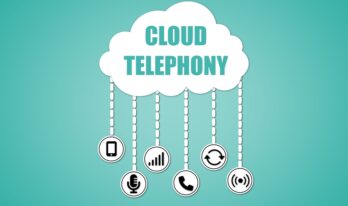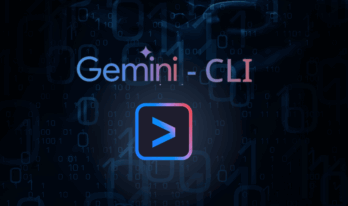Most companies shift their data on better platforms for better features to ease up their day-to-day business operations.
Reasons like cost issues, better features, and quick services can make a company to transfer data from one platform to another.
Let’s dive into some of the open-source data migration tools, which can help you out and don’t put much load on your budget as well.
Here’s the List of Top Open-Source Data Migration Tools
If a user is looking for bringing remote files into sync, rysnc is best for it,
rysnc, is a file transfer program for UNIX systems.
Key Features:
- Low latency for multiple files because of internal pipelining.
- Stores additional information like hard links, file ownership, permissions, etc.
- Ability to update complete file systems or directories.
Data Loader by Salesforce is a client application through which clients can import and export their data.
Data is imported in the format of CSV (comma-separated values).
While working in user interface mode, a user can specify configurations like using CSV files for data transfer and field maps.
While working from a command-line perspective, a user can specify configuration using mappings, taking actions on files, etc.
Key Features:
- Users can map the fields through drag and drop.
- It is ideal for platforms like Windows and Mac.
Also Read: Top 15 Data Masking Tools – 2020
Cloud Data Loader by Jitterbit is an ideal data migration solution for Salesforce users.
Users with this tool can also work efficiently with other Salesforce editions like Salesforce group and professionals.
Users can manage their operations from almost any device.
It can be used both on Windows and Mac.
Key Features:
Some of the key features of Cloud Data Loader are discussed under
- Users can quickly move data from databases, flat files, or Salesforce by creating queries, making updates, and other functions like upserts and deletion, etc.
- Users have access to logs and operation history to check the status of their data.
- Elimination of manual data entry saves a lot of time for users.
Phinx makes it relatively easy to migrate data for PHP applications.
Developers need not write down the SQL code, instead, API’s provided by Phinx assists them in creating migrations using PHP coding.
Using routine SCM systems, developers can version these migrations and allow Phinx migration possible for multiple databases.
Key Features:
- Integrates with multiple PHP tools like Phing, PHPUnit.
- Within a short span of time, data migration can be done by users.
- Integrates with other applications as well.
Dbmate is a database migration tool, allowing users to keep its database schema in sync with multiple developers and the production servers.
Developers use languages like Go, Node.js, Python, Ruby, and PHP for writing applications backed by the database, and Dbmate can be used with such languages.
It is most fruitful for the developers who write multiple services in multiple languages and don’t want to compromise on the reasonability with development tools.
Key Features:
- Built-in support for .env files.
- Time-stamped migrations to avoid conflicts with multiple developers.
- Supports MySQL, PostgreSQL, SQLite, and ClickHouse.
Apache NiFi is a database migration tool.
It provides developers with interfaces that connect to a database server and perform functions like data ingestion and extraction.
Moreover, it supports users by providing them with scalable directed graphs of data routing, transformation, etc.
It works in four stages wherein it primarily fetches table list, creates a table, extracts data, and lastly ingests data.
Key Features:
- Provides users with a web-based user interface wherein they experience design, control, feedback, and monitoring.
- Provides security as it supports multi-tenant authorization and SSL, SSH, HTTPS, and encrypted content.
- High configuration as it supports dynamic prioritization, guaranteed delivery, and backpressure.
Flyway is an open-source database migration tool allowing users to transfer data with its command-line client, which happens to be an API.
It works on basic commands like migrate data, clean data, validate data, undo changes, create a baseline, and lastly, repair.
Key Features:
- Users can write their migrations in SQL or Java.
- Supports multiple databases like Oracle, SQL server, DB2, and MySQL.
- Plugins for frameworks like Spring Boot, Grails, Play, etc.
TiDB is an open-source distributed scalable, hybrid transactional and analytical processing (HTAP) database.
Data migration tool (DM) by TiDB is an open-source tool
Data migration by TiDB provides support in migrating data from MySQL/MariaDB into TiDB.
Key Features:
- It is designed to work on a cloud platform for making deployment and operations flexible.
- Supports both OLTP and OLAP workloads.
- It ensures the availability of data through the use of the Raft consensus algorithm.
Refinery simplifies database migration for multiple databases.
It is useful for the SQL migration for Rust.
It efficiently migrates data whenever a database connection is provided to it.
It does so either by embedding provided database connections on users' Rust code or using refinery_cli command.
Key Features:
- Users can define their migrations in .sql files that assist users in modifying information in a database.
- Easy integration with users' Rust code.
- Supports undo/rollback migrations.
Availability: Available under MIT license.
Ladder is another one of the open-source database migration tools.
It supports the MySQL database server and is written in PHP 5.
It can be used to track changes in databases alongside source code by integrating it in conjunction with source code.
Key Features:
Some of the key features of the Ladder are discussed as under
- Users can add, drop or alter columns.
- Metadata is stored and used during the time of rollback.
- Users can add and drop indexes or constraints.
Database Migration Tools: Conclusion
We’ve only provided you with some of the best open-source data migration options but eventually, it comes down to your needs.
Selecting the right tool can be better done by considering your exact database management needs and its compatibility with the mentioned tools.




